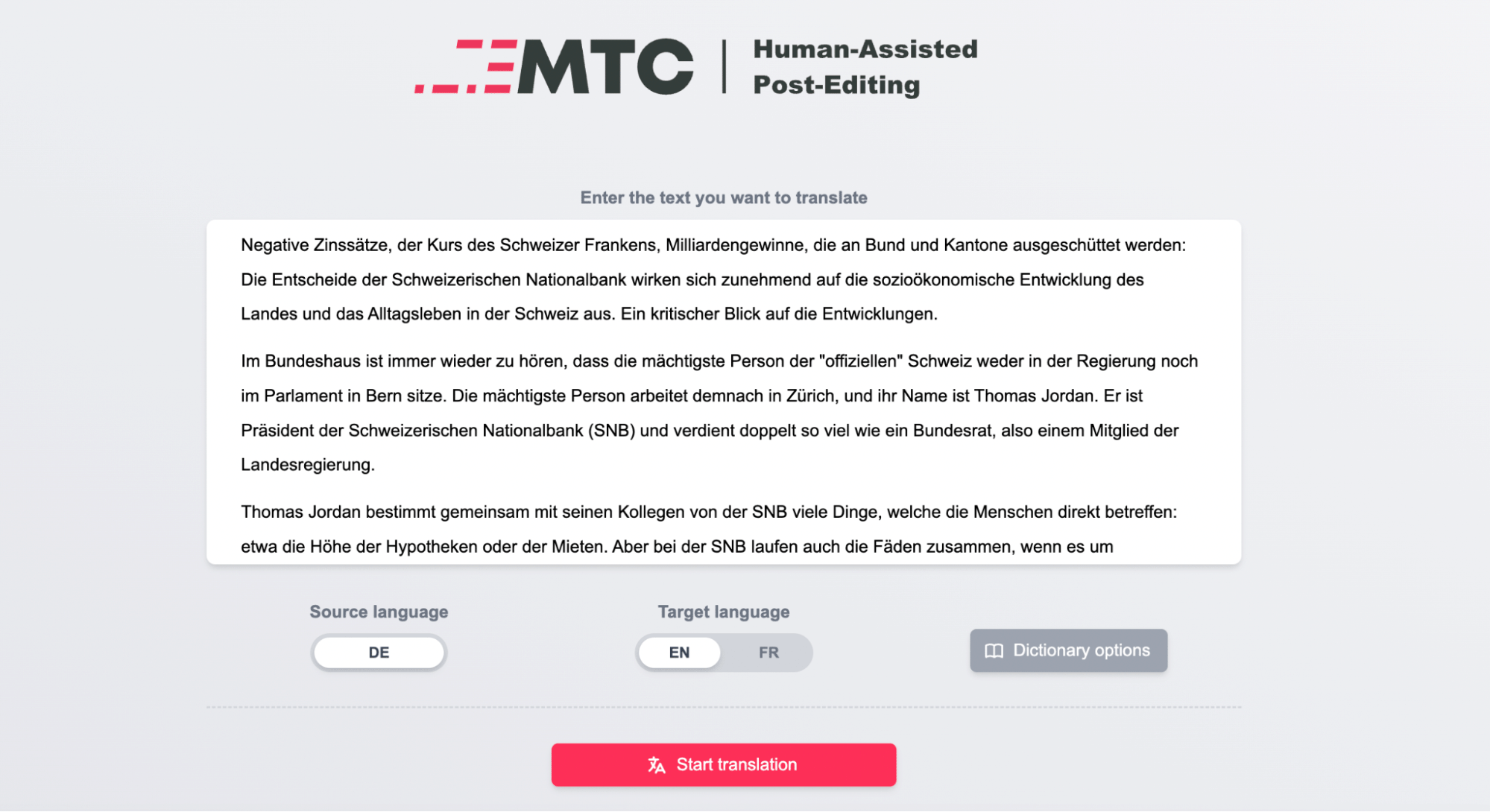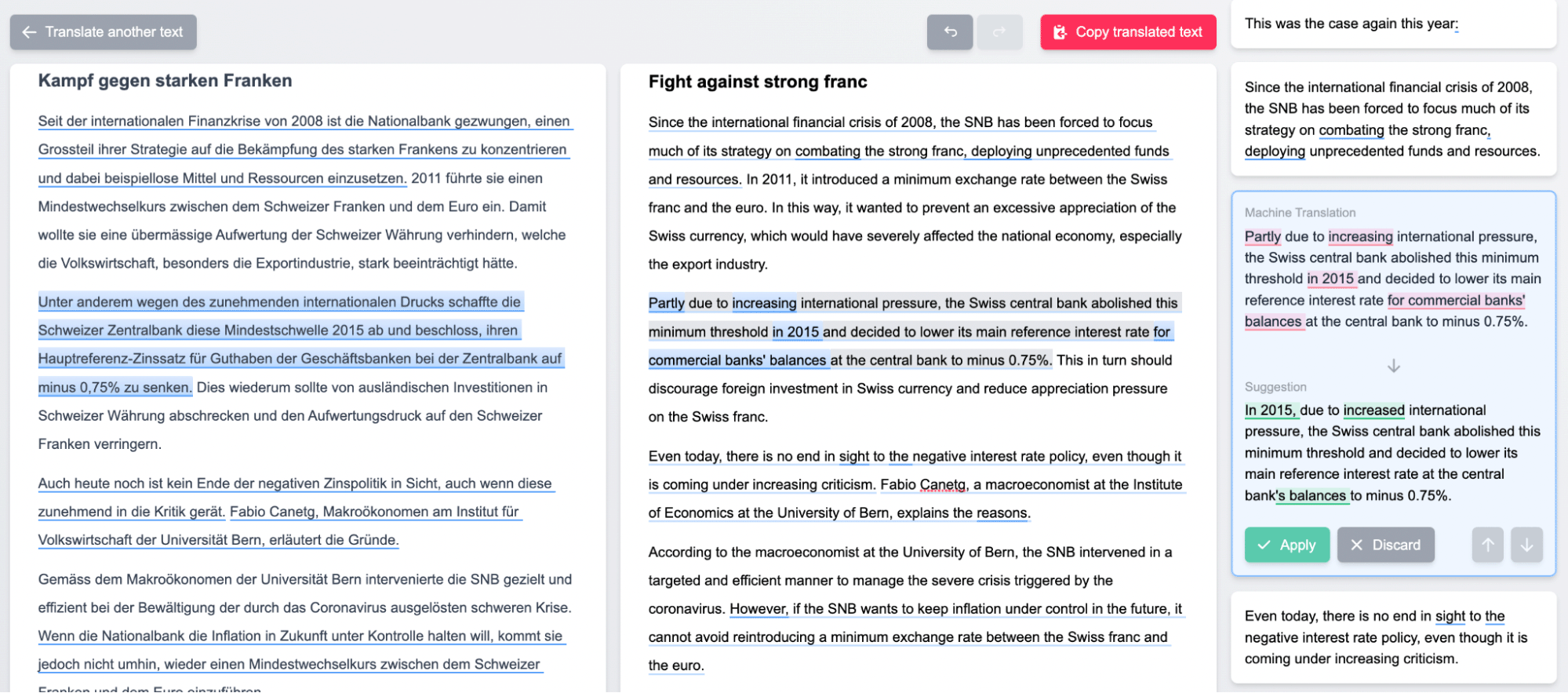Human-assisted Post-editing of Machine Translations
Duration
12 months
Status
Completed
MTC Team
Dr. Laura Mascarell, Philippe Schlattner, Dr. Tatiana Ruzsics, Julian Mäder, Dr. Severin Klingler, Prof. Ryan Cotterell
Collaborators
Dr. Cristina Kadar (NZZ), Titus Plattner (TX Group), Philipp Fontana (Keystone-SDA)

The quality of machine translated texts has drastically improved in the past decade. Many available tools such as Google Translate or DeepL produce good translations for general use. However, to obtain high-quality translations, a human usually reviews and edits the automatic translation. In the journalistic domain, for example, an editor corrects translation errors, regional appropriateness (e.g. what is polite in German can be offensive in French), and stylistic mistakes prior to publishing. This post-editing process is usually cumbersome and time consuming. Automatic post-editing is the research area that aims at automatically improving machine translation output.
Goals
The goal of this project is to aid journalists with the process of translating news articles from German to English and German to French. For this purpose, we aim at developing a web editor that offers translation suggestions from an automatic post-editing model. This will allow for a more intuitive and speedier translation process while maintaining the quality of the translations. The system will be based on state-of-the art methods in automatic-post-editing and allow the use of Switzerland specific translation dictionaries. In addition, we aim at exploring methods that allow automatic post-editing models to continuously learn from users' corrections, improving their performance over time.
Outcome
At the core of this project, we built automatic post-editing models to support German to English and German to French translations. The models adapt the translation output of the general-domain system DeepL to the Swiss journalistic domain. The models can also deal with lexical constraints, giving journalists the opportunity to specify the translation of terms according to their guidelines.
We also developed a human-assisted post-editing web editor. The web editor implements a translation workflow, where users can automatically translate text in the supported languages (i.e. from German to English or German to French) and allow them to post-edit the translation output and correct errors or adapt it to a specific style or domain. To support them during this post-editing process, the editor integrates the automatic post-editing models to offer translation suggestions in the Swiss journalistic domain. The editor also offers the possibility to enforce translations from the TERMDAT dictionary, a multilingual specialist dictionary of Swiss terminology.
